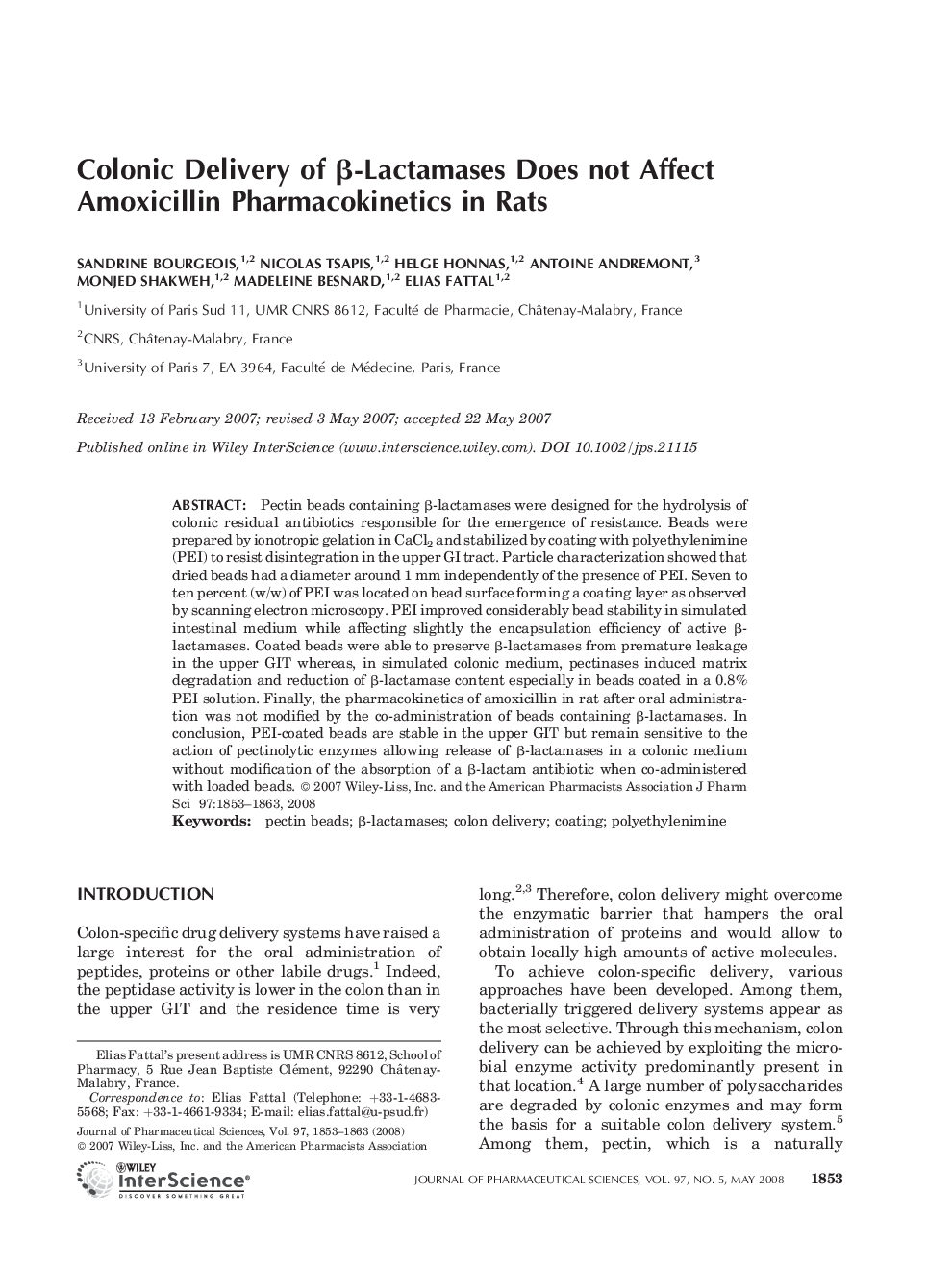| Article ID | Journal | Published Year | Pages | File Type |
|---|---|---|---|---|
| 2485673 | Journal of Pharmaceutical Sciences | 2008 | 11 Pages |
Abstract
Pectin beads containing βâlactamases were designed for the hydrolysis of colonic residual antibiotics responsible for the emergence of resistance. Beads were prepared by ionotropic gelation in CaCl2 and stabilized by coating with polyethylenimine (PEI) to resist disintegration in the upper GI tract. Particle characterization showed that dried beads had a diameter around 1 mm independently of the presence of PEI. Seven to ten percent (w/w) of PEI was located on bead surface forming a coating layer as observed by scanning electron microscopy. PEI improved considerably bead stability in simulated intestinal medium while affecting slightly the encapsulation efficiency of active βâlactamases. Coated beads were able to preserve βâlactamases from premature leakage in the upper GIT whereas, in simulated colonic medium, pectinases induced matrix degradation and reduction of βâlactamase content especially in beads coated in a 0.8% PEI solution. Finally, the pharmacokinetics of amoxicillin in rat after oral administration was not modified by the coâadministration of beads containing βâlactamases. In conclusion, PEIâcoated beads are stable in the upper GIT but remain sensitive to the action of pectinolytic enzymes allowing release of βâlactamases in a colonic medium without modification of the absorption of a βâlactam antibiotic when coâadministered with loaded beads.
Related Topics
Health Sciences
Pharmacology, Toxicology and Pharmaceutical Science
Drug Discovery
Authors
Sandrine Bourgeois, Nicolas Tsapis, Helge Honnas, Antoine Andremont, Monjed Shakweh, Madeleine Besnard, Elias Fattal,
